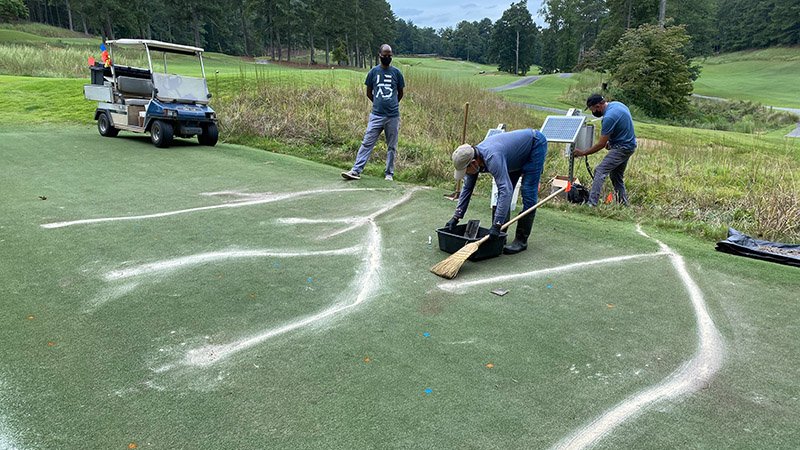
Good things come in small packages. Really, really small packages. Water infused with tiny bubbles could hold a key to growing healthier turf and reducing inputs.
A study by researchers at the University of Georgia is examining the effects of nanobubble-ozone technology on soil health and turfgrass systems.
The study, which is led by UGA soil microbiologist Mussie Habteselassie, Ph.D., will study the effects of nanobubble-infused irrigation water on root aeration and soil health. Nanobubbles, according to researchers, are 2,500 times smaller than a grain of salt. They are so small that the technology used to infuse the bubbles into water can squeeze 61 million nanobubbles into a single milliliter of water.
Funded by the Georgia Department of Agriculture, the three-year study began in October and will look at factors such as water use, shoot growth and root growth, and will take place in a greenhouse and in a laboratory at the university's research facility in Griffin, as well as in the field at Rivermont Golf Club in Johns Creek, Georgia. The research team says the study will "track changes in activity, abundance and composition of beneficial soil microorganisms that play an important role in organic matter decomposition and nutrient cycling."
Although they are small, nanobubbles are mighty, according to researchers who say they can change surface tension and can improve soil health by increasing microbial activity beneath the surface. The results the researchers hope to prove are that the nanobubbles can lead to healthier soil and turf while also allowing turfgrass managers to use less water. Previous research has shown that nanobubbles smaller than viral particles stay suspended in solution unlike larger carbon dioxide bubbles, like those found in soft drinks, thus allowing oxygen to subside throughout the soil profile. Several other studies have shown that use of nanotechnology can result in water savings of as much as 20 percent.
"What this potentially means is that, when you irrigate a field with nanobubbles, you increase the oxygen level in the root area of the turfgrass," Habteselassie said in a UGA news release. "More oxygen at the roots means better root development, increased water use efficiency, and also an increase in microbial activity. When you have increased microbial activity, there is better decomposition of organic matter and that releases nutrients and makes them more available to the plant."
Several studies have shown that use of nanotechnology can result in water savings of as much as 20 percent.
Rivermont Golf Club superintendent Mark Hoban has a long history of developing protocols to minimize inputs at the golf course in Atlanta's northern suburbs. He told TurfNet that he hopes the research will prove that the bubble-infused water can result in reduced reliance on pesticides, fertilizers and water.
"We started trial work in our greenhouse three weeks ago, and we are starting on the golf course this week," Hoban said.
"Hopefully, in six to nine months we'll begin seeing some good data."
The research is an extension of previous work at UGA that was funded by the Georgia Golf Environmental Foundation. The new study utilizes newer technology by Rapid Water Technologies, which manufactures a nanobubble generator that removes and prevents the buildup of biofilm in commercial and industrial water use. Other nanobubble research in turfgrass has been conducted at the University of Arkansas and Clemson University.
Previous research in Australia has shown that turf irrigated with nanobubble-infused water requires less water, wetting agents and fungicide, Hoban said.
Results of a similar study conducted in China on rice were published last year. That study showed that nanobubble-infused water resulted in improved nutrient uptake and plant growth.
According to the UGA researchers, when nanobubbles burst they release H2O3 which they believe can kill microbial cells and eventually control pathogens that cause diseases such as dollar spot and leaf spot.
"This is where the sustainability aspect comes in," Habteselassie said. "If we can show that this works in turfgrass, it can lead to reduced use of chemicals and fungicides because the radicals released by the nanobubbles are controlling pathogens."

